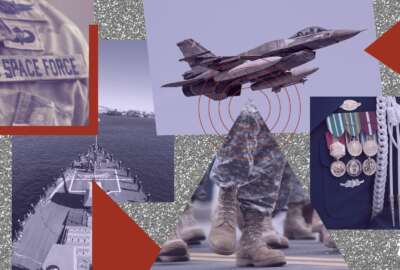In spite of ongoing efforts to combat sexual assault, a recent survey showed the armed services have a bigger problem than ever. Using words like “tragic” and “disappointed,” top military personnel testified before the House Armed Services Committee last week to describe how they plan to fix the problem.
“We can’t afford to fail our soldiers and civilians in this area, and getting this problem right and driving lasting change in the way that we prevent and respond to sexual assault will safeguard soldiers physical safety, increase our military readiness, build trust and ensure that every Army team member is treated with dignity,” said Gabe Camarillo, undersecretary of the Army.
The Army’s Gilbert Cisneros, undersecretary for personnel and readiness, told lawmakers the Army now has the framework in place to track the progress and effectiveness of its sexual assault prevention programs. The centerpiece of the Defense Department’s response will be a hiring effort.
The fiscal 2022 National Defense Authorization Act required the services to hire additional administrative support personnel for victim services, and also look into creating a military occupational specialty for sexual assault response coordinators.
Each of the services planned a two-pronged effort to add support staff. The different branches will hire and train a professional sexual assault and sexual harassment prevention workforce. Cisneros said the Army has new employees in place and in the training pipeline. “At full operating capacity [it] will include over 2,000 personnel stationed around the world. The department has worked to create a targeted recruitment plan to support the services in their hiring efforts,” he said.
The Navy also said they are in the middle of a staffing up process for support staff.
“We are in the process of hiring 82 during this fiscal year. So by the by the end of this fiscal year, we expect to have roughly half on board. There was a problem with the continuing resolution on the pace of hiring, but our goal is to have at least 225 by fiscal year ‘24,” said Erik Raven, undersecretary of the Navy.
DoD will also focus on developing specially trained prosecutors through the Office of Special Trial Counsels who have Department of Justice certification in handling sexual harassment and sexual assault cases. Each service reported increasing their number of attorneys, and getting more of them through the certification pipeline. One of the primary goals of the process is to take the investigative and judicial process out of the chain of command so that cases will be handled by specially trained prosecutors and judges.
Raven said the Marine Corps and Navy have started staffing up.
“There are approximately 40 litigation professionals in the Navy, approximately 12 in the Marine Corps, which are on the job — not in the office of special trial counsel — they are actually performing the mission,” He said.
The Air Force has a similar plan in place.
“Department of the Air Force has 19 special trial counsel. Those folks were certified in June, that certification process was informed by Department of Justice expertise,” said Gina Ortiz Jones, undersecretary of the Air Force. “We also know that as important to that is making sure that our investigators have the expertise. So we actually also had two individuals from the Office of Special Investigations participate in that training. And we will be at full operational capability with a complement of 32 special trial councils by December of 2023.”
Both Raven and Cisneros said their services intend to concentrate their resources at specific bases that have had the biggest sexual assault problems. The naval bases in San Diego and Norfolk, Virginia, and the Army’s Fort Hood, Fort Bragg and Fort Bliss were among the bases that have seen the highest rates of sexual assault. All have concentrations of younger service members.
“The priority will be on fleet concentration areas, we’ll think Norfolk, San Diego, Hawaii, where so many of our forces are co-located,” Raven said.
Overall reports of sexual assault in the military for fiscal year 2021 increased 13% over the previous year, according to a report published by Department of Defense Sexual Assault Prevention and Response (SAPR). The report also estimated that 29% of active duty women experienced sexual harassment, along with 7% of active duty men. Fiscal year 2021 had the highest estimated rate of sexual assault for women since the department started keeping statistics 2006. That year was the previous high water mark and the first year they started measuring it, according to a statement by Beth Foster, DoD executive director for force resiliency.
“These numbers are tragic and extremely disappointing. On an individual level, it is devastating to conceptualize that these numbers mean that over 35,000 service members’ lives and careers were irrevocably changed by these crimes,” Foster said.
Copyright
© 2024 Federal News Network. All rights reserved. This website is not intended for users located within the European Economic Area.


